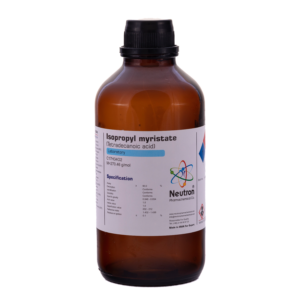ایزو آمیل الکل
| Formula | C5H12O |
| Chemical formula | C5H12O |
| Density | 0.81 g/cm3 (20°C) |
| Molar mass | 88.15 g/mol |
| CAS number | 30899-19-5 |
| HS Code | 29051500 |
| EC number | 250-378-8 |
| Storage | Without limitation |
| SDS | available |
| R phrase | R 10-20-37-65 |
| S phrase | S 46 |
| Odour | haracteristic |
| Form | liquid |
| Color | colourless |
| Ignition temperature | ~ 340 °C |
| p H | neutral (20g/l 20 °C) |
| Solubility in water | 28 g/l (20°C) |
| Solubility in ethanol | soluble |
| Melting point | _117°C |
| Flash point | 43 °C |
| Boiling point | 131°C |
| Assay (Total isomeric compounds) | ≥ | 98 | % |
| Description | Conforms | ||
| Identification | Conforms | ||
| Solubility | Conforms | ||
| Density | ~ | 0.808 – 0.809 | |
| Water | ≤ | 0/3 | % |
Isoamyl Alcohol is a colorless, flammable organic alcohol with a characteristic strong odor, commonly used in pharmaceuticals, biochemical research, and industrial applications as a solvent, reagent, and intermediate in chemical synthesis.
🏭⚗️ Production
Isoamyl alcohol is typically produced through the fermentation of sugars by yeast, followed by fractional distillation to isolate the alcohol from other fermentation products. Industrially, it can also be synthesized from the hydroformylation of butenes followed by hydrogenation. Purification ensures high chemical purity suitable for pharmaceutical and laboratory use.
🔬 Properties
Isoamyl alcohol is a colorless liquid with a boiling point around 131°C and a density of approximately 0.81 g/cm³. It is moderately soluble in water and fully miscible with most organic solvents such as ethanol, ether, and chloroform. It is flammable, volatile, and exhibits a strong, pungent odor. Chemically, it behaves as a typical primary alcohol, capable of oxidation, esterification, and other alcohol-based reactions.
🧪 Applications
In pharmaceutical and biochemical laboratories, isoamyl alcohol is used as a solvent for nucleic acid extraction, particularly in combination with chloroform for DNA and RNA purification. It serves as a flavoring agent in limited concentrations and is also used in the synthesis of esters for fragrances and pharmaceuticals. In industrial chemistry, it functions as a reagent in the production of isoamyl acetate and other chemical intermediates.
⚠️ Safety
Isoamyl alcohol is flammable and can cause irritation to the skin, eyes, and respiratory system upon contact or inhalation. Prolonged exposure may lead to central nervous system effects such as dizziness or headache. Proper laboratory safety measures include using it in a well-ventilated area, wearing gloves, goggles, and flame-resistant lab coats, and storing it in tightly sealed containers away from heat sources and oxidizing agents. In case of spills, affected areas should be ventilated and cleaned immediately while avoiding ignition sources.



